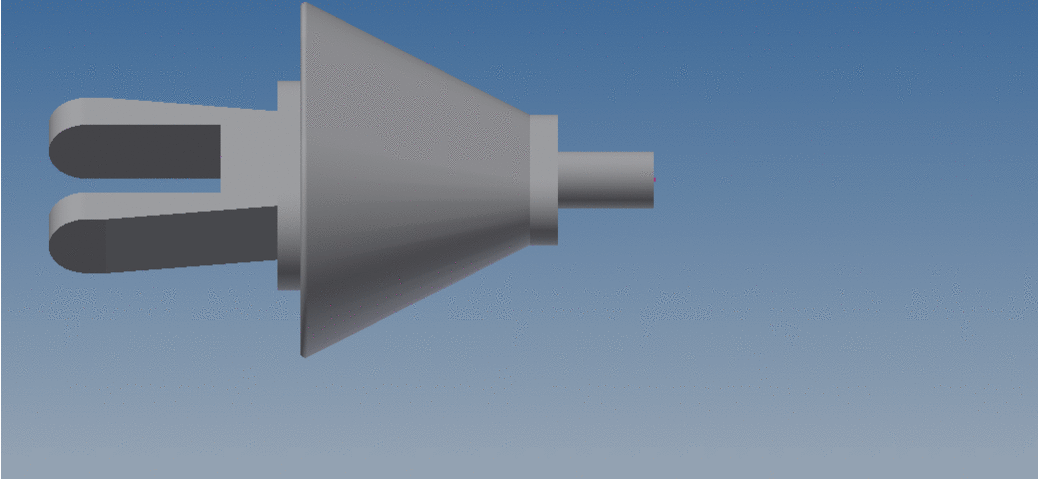Stapes prosthesis
Stapes prosthesis from a 3D printer. An innovative weapon in a fight for hearing

 Project title
Project title
New chamber stapes prosthesis
 Name of Beneficiary/Beneficiaries
Name of Beneficiary/Beneficiaries
Warsaw University of Technology
 Name of programme
Name of programme
TANGO
 Competition
Competition
TANGO 1
 Project value
Project value
PLN 1,325,221.00
 Funding value
Funding value
PLN 1,148,750.00
 Project delivery period
Project delivery period
01 July 2015 - 31 May 2019
View the results of our work



What problem is addressed by the project?
Problem: Conductive hearing loss caused by immobilisation of the stapes, the smallest human bone in the middle ear. The currently used piston stapes prostheses do not give the expected hearing results, especially for sounds with high frequencies (above 3kHz). Additionally, piston prostheses pose a high risk of postoperative complications. It is caused by the need to introduce a vibrating element (piston) into the space of the inner ear. Some of the complications (including immobilisation or the piston falling out) require another surgical procedure. The results of reoperation are usually worse than those of the first procedure.
The new chamber prosthesis is much more effective and much safer for the patient compared to all prostheses currently available on the market and used in clinical practice. The original, patented design solution works similarly to the structure of the healthy ear and does not require the introduction of a vibrating element into the inner ear. The chamber prosthesis restores the hearing to the physiological level in the entire range of acoustic frequencies (from 20Hz to 10kHz) and protects the inner ear against injury.
The issue is described in greater detail in our publications:
Kwacz, M., Sołyga, M., Mrówka, M., & Kamieniecki, K. (2017). New chamber stapes prosthesis – A preliminary assessment of the functioning of the prototype. PloS one, 12(5), e0178133.
Pudlik, M. S. (2017). New chamber stapes prosthesis-modification of geometry and CAD documentation (MSc Thesis, Institute of Micromechanics and Photonics).
Banasik, K., & Kwacz, M. (2017). Numerical study of the PDMS membrane designed for new chamber stapes prosthesis. In Recent Global Research and Education: Technological Challenges (pp. 223-228). Springer, Cham.
Kiryk, E. A., Kamieniecki, K., & Kwacz, M. (2018). Design of a resilient ring for middle ear’s chamber stapes prosthesis. Computer methods in biomechanics and biomedical engineering, 21(15), 771-779.
Who uses the project results?
Patients diagnosed with hearing loss and otolaryngology surgeons.
After a surgical procedure and after placing a chamber stapes prosthesis in the middle ear, patients will have their hearing restored in the entire range of acoustic frequencies. Otolaryngology surgeons will benefit from an easier and safer procedure for implanting chamber prostheses.
Another benefit from both target groups (patients and doctors) is a reduced number of reoperations. Fewer reoperations also mean savings for the publicly funded healthcare system.
What was the greatest challenge during project implementation?
Manufacturing of prototypes was a great challenge for us. As part of the project, we tested various design variants of the chamber staples prosthesis and searched for the optimal variant. Indications for the modification of the structure resulted from both the analysis of vibrations of the anatomical structures of the ear and indications of highly qualified otolaryngology surgeons. Rapid prototyping was the reason why we designed and built our own 3D printer (Photo 2). During the project implementation period, there were no commercial printers on the market that would ensure print quality in a micrometre scale. The design and construction of our own printer is the effort of a team of several engineers from the Institute of Micromechanics and Photonics of the Warsaw University of Technology. The team members have devoted a tremendous amount of time and effort to make sure that the machine prints correctly, and we are very grateful for that. Their work facilitated the implementation of the project and showed that the developed technology can be used in the future for the production of medical devices dedicated to otolaryngology surgery applications.